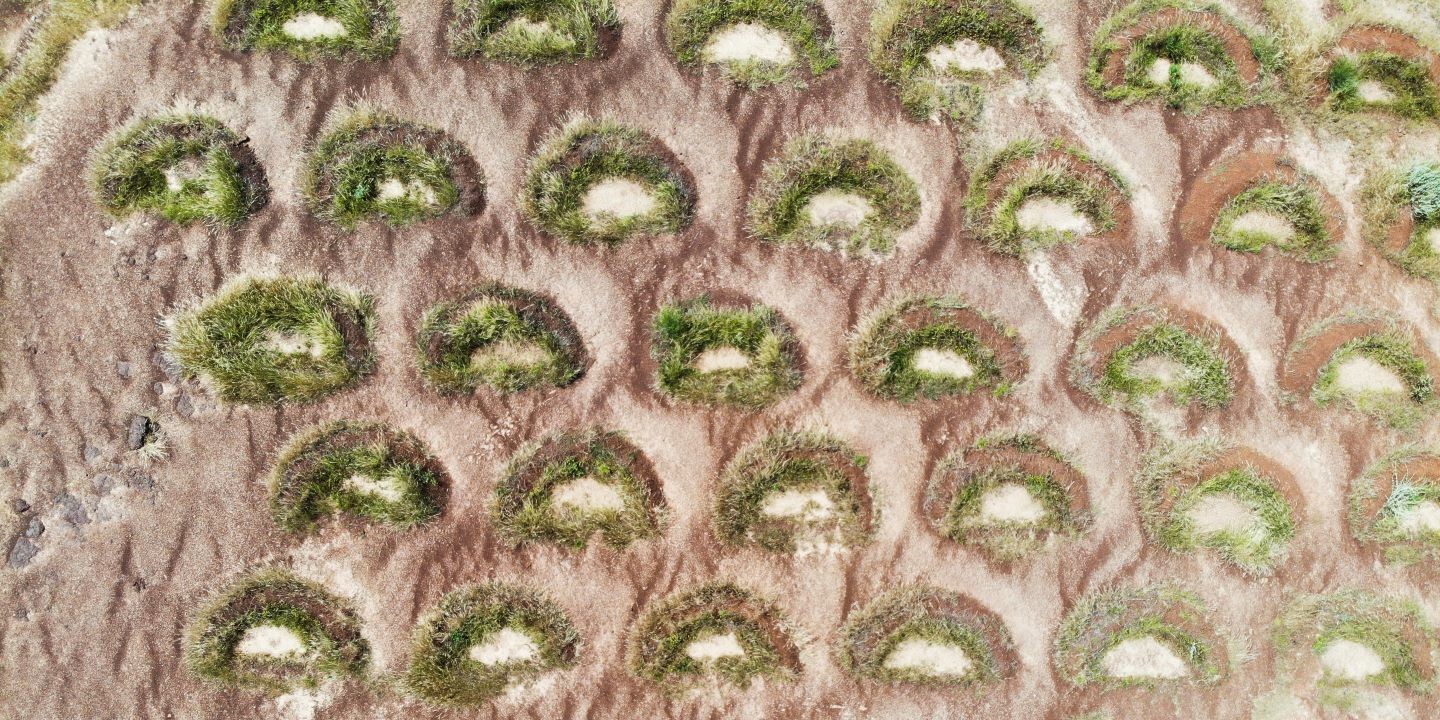Groundwater can help small-scale farmers adapt to climate change, if it’s used sustainably
IFAD Asset Request Portlet
Asset Publisher
Groundwater can help small-scale farmers adapt to climate change, if it’s used sustainably
Estimated reading time: 3 minutes
As populations grow and climate change affects water availability, small-scale farmers in arid and semi-arid areas are finding it ever harder to grow their crops.
But many parts of the world have invisible freshwater resources in aquifers deep underground. Unlike surface water, groundwater availability isn’t always subject to the changing climate, and can help farmers maintain food security and build livelihoods – if it’s used sustainably.
Egypt: Making the desert bloom
For thousands of years, Egyptians relied on the waters of the Nile for agriculture. But population increase and growing demand for water have made Egyptians increasingly dependant on groundwater, especially from deep aquifers in the eastern and western deserts and the Sinai.
Egypt also has a large youth population and high unemployment. Now, the Government of Egypt has an ambitious plan to bring 1.5 million feddan (approximately 630,000 hectares of land) under cultivation using groundwater, equivalent to 20 per cent of the land currently irrigated by the Nile. This will help create opportunities for young people and make the country’s food systems more robust.
One of the first nine areas to be reclaimed under the programme is El Moghra, a small, long-uninhabited oasis some 200 kilometres west of Cairo. Here, the IFAD-supported PRIDE project is working closely with youth and small-scale farmer groups to settle 42,000 feddans of newly reclaimed land, helping them engage in sustainable agriculture, manage their scarce water resources, and access decent jobs.
Farming here isn’t easy – the water and soil conditions are generally very saline – but the PRIDE staff are on hand to give technical advice on sustainable agriculture practices, such as selecting and growing salt-tolerant crops (including olive, palm and jojoba). The project also provides funding for youth groups to use drip irrigation systems for their water management, erect fences to protect the land against encroaching sand dunes, and buy the inputs they need to start farming, like saplings and fertilizer.
Niger: Re-greening the Sahel
In other areas, desertification has caused groundwater to be over-exploited. This is the case in the Maradi, Tahoua and Zinder regions of Niger, where over 60 per cent of the country’s population lives. As in many parts of the semi-arid Sahel region, the desert is encroaching on lands where small-scale farmers grow the food their families depend on. Groundwater levels are declining, and droughts are happening more often.
The ProDAF project is the result of a joint investment by IFAD, the GEF, and the OPEC Fund to help the region’s small-scale farms reliably access the water they need to cultivate, while improving water and soil quality so that natural resources are sustainably managed.
Farmer field schools are training these farmers in techniques like assisted natural regeneration, which improves how soil allows water to move through it. Traditional techniques such as growing plants in zai pits save water and enrich the soil, while demi-lune embankments capture water runoff. Currently, over 21,700 hectares of land are being managed through these practices.
Better livelihoods through sustainable irrigation
There are many good examples of sustainable water management practices being developed by the organizations that IFAD works with and learns from. For example, in Ethiopia’s Amhara region, where farmers traditionally use ropes and buckets to draw groundwater, solar-powered pumps now connect directly to low-cost closed-pipe systems. This is supplemented by conservation agriculture practices introduced by USAID, such as grass mulching, crop rotation, and no-till methods to maintain soil structure and moisture. Together, these solutions have helped vegetable farms increase productivity by 30 per cent while reducing water consumption by up to 30 per cent.
A larger-scale example comes from Guerdane, a citrus-growing region of Morocco. Recurrent droughts had led to severe groundwater depletion: the water table was falling by 3 metres per year, and over 3,000 hectares of land had been abandoned. In 2004, the International Finance Corporation designed the world’s first public-private partnership for irrigation. By 2009, citrus farmers were using drip irrigation to sustainably cultivate 10,000 hectares, partly using surface water from a dam 60 km away, with far less water taken from the ground. By 2017, Moroccan citrus production had increased by 82 per cent.
Let’s make the invisible visible
A huge part of the world’s freshwater is not in lakes and streams: it lies under our feet. Just like with surface water, if groundwater is used carefully, it can be used by small-scale farmers to grow the crops they need to feed their families and build livelihoods in areas that are strongly affected by climate change.
At the same time, managing this precious resource carefully, avoiding over-exploitation and contamination, is essential. That’s why it’s time we explore these options, generating the data and putting in place measures to ensure that groundwater is used sustainably.
Learn more about IFAD’s work in Egypt and Niger.
Publication date: 21 March 2022